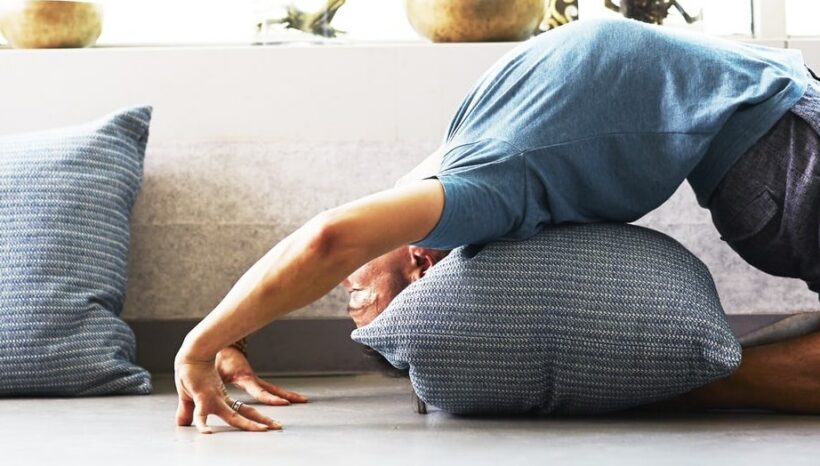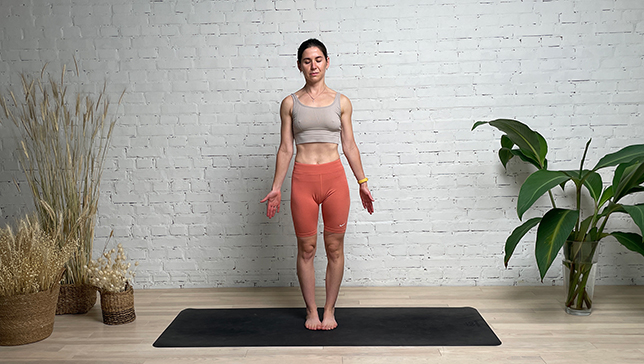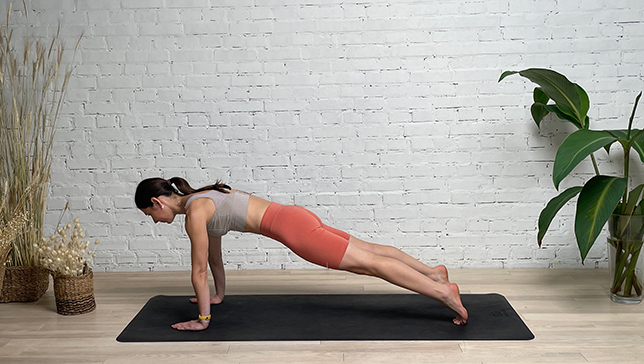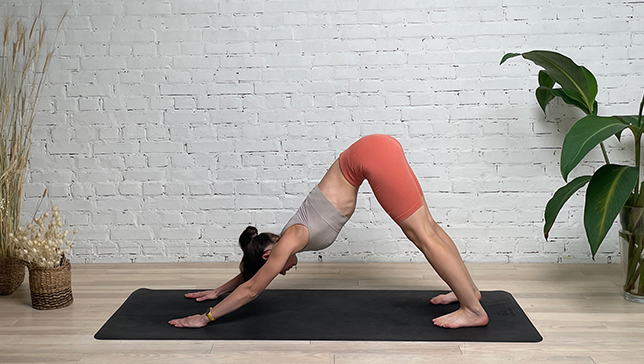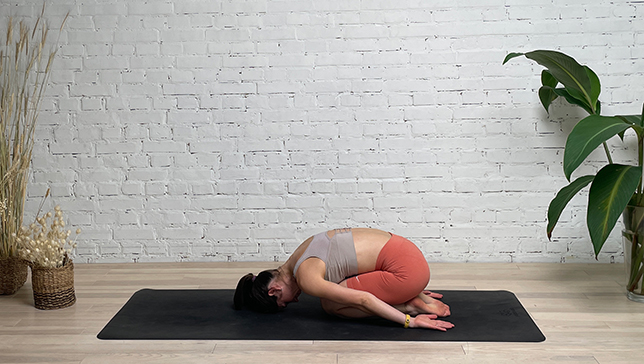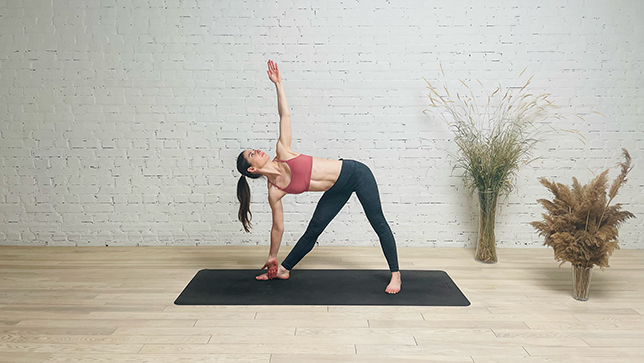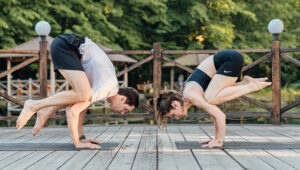Starting yoga for beginners can be confusing as you try to figure out all the essential yoga components. However, your journey can be beautiful and great if you know what to do and how to go about it.
At first, you may need to explore and understand many layers of yoga for complete beginners so that you can discover a personal rhythm and a tune you can dance or fit into your schedule. You’ll have the best experience if you begin the journey with open arms, an open heart, and a mind open to learning.
However, for many, the thought of starting from scratch can be discouraging. But, in no time, you’ll grow into yoga practice if you begin regardless of the feeling.
Basic Yoga For Beginners
As we’ve come to know it, yoga is a vast collection of several spiritual practices and techniques to integrate your mind, spirit, and body. The ultimate goal is to achieve a state of oneness or enlightenment with the world around you or “the universe,” as it’s mostly called during yoga lessons.
Though yoga’s ultimate aim is idealistic, its essence is scientific and practical because it emphasizes observable results and direct experience. However, to understand basic yoga for beginners, you might have to go through series of the learning process which covers the history of yoga, its philosophical aspect, and others like the major yogic test, the chakras, and use of asanas for the treatment of common health conditions and ailments.
Seeking to understand these yoga fundamentals may take you a while, but you do not have to wait until you learn them before beginning the simple yoga for beginner’s training. Start practicing yoga by going to yoga classes or subscribing to free yoga for beginner’s channels on various platforms.
Starting this way can be discouraging; however, you may need to set some goals and set out to achieve them. Here are some of the philosophies you should hold on to as you begin your yoga journey:
- You don’t remain a beginner forever.
Seeing how experts do yoga and how many results they’ve gotten can make you feel agitated, wishing you can be like them. However, remember that an expert today was once a beginner too.
It would help if you embraced been a total novice when you are only a beginner. The more practice you do, the more experience you get; therefore, your time as a beginner is finite. Having this at the back of your mind will make you more relaxed and enjoy the growth process as you should.
- Don’t compare yourself to others.
Comparing yourself to others can discourage you as a beginner. You can quickly get intimidated, and intimidation is not a key to motivation. As a beginner, you need to get as much inspiration as possible to push through and get you on the expert level.
Remember that the reason you decide to do yoga is different from that of others. When you practice yoga, you do it in your own body and your mat; therefore, there’s no need to compare yourself.
Looking at other people during practices to check your pose and judge if you’re doing it right is a different form of comparing yourself to them. If you do that for a while and feel intimidated, you might want to stop and only listen to the teacher, confirm your alignment, find your breath, and remain in your experience.
- You must be able to breathe.
As a beginner, you can’t take all yoga poses. You’ll find some poses quite simple to do while you’ll find it hard to do others. The general rule is that you’ve lost the yoga anytime you take a yoga pose and can’t breathe.
It’s best to back off from that pose and, in its stead, pick a simple yoga for beginners. Then, reconnect with the steady flow of breath from the new pose you chose, and continue in that level of connection and awareness. You might want to ask, is flow yoga for beginners? Yes, flow yoga is what you need.
- Take your mind off pretzel postures.
As a beginner, looking at experts who do various yoga poses, it’s easy to think the more twitted the carriage, the more it's effectiveness. However, if that were true, children would qualify as the best yogis!
When it comes to yoga, it’s not about the twist and turns of the pose. When you study expert yogis or become an expert, you might take a few curly poses, which should be your goal. However, when you take a pose, and your mind can’t focus, you find it difficult to breathe, and you keep at it for the sake of ego, you already lost that yoga.
Yoga is more about creating a union of your mind, body, and spirit. Any pose can achieve that, but only if you’re comfortable in it.
- Yoga is more about practice.
Yoga is a 1% theory, and 99% practice is a famous yoga quote by the great Pattabhi Jois. That quote says that you may learn the different types of yoga poses by theory. However, you have to put them to practice to get the result they offer.
Therefore, you need to roll out your mat today, tomorrow, next tomorrow, and the many days after that. It does not matter how many poses you can take or the length of your sessions. You only need to be consistent with it. Cultivate the habit of regular practice, and you will be surprised at the positive effect it can have on your life.
While many people associate yoga with modern-day mysticism or a widespread phenomenon at the gym, it is an ancient practice that connects the body, spirit, and mind through various poses, meditation, and controlled breathing.
Over the past years, medical professionals have considered yoga to be a form of attaining healthy living. The reason for this is not far-fetched, as yoga has proven to offer many health benefits.
If you are to research the benefits yoga offers, you’ll discover up to 77 different benefits. And, there are various ongoing researches to find more benefits of yoga. Let’s discuss some of the common benefits of yoga as a beginner. It will provide insight into what you stand to gain as you engage in the practice of yoga.
- Yoga Reduces Stress. Yoga can be the antidote to a stressful modern-day lifestyle. The focus, breathing, and centering of yoga helps you reduce stress. It provides a welcomed escape from the up and downs of your everyday life. Knowing that you have a way to escape alone is relaxing. Spending ten minutes every day is enough to de-stress and offer you a sense of calm throughout the day. There are many yoga poses specifically designed to improve relaxation and decrease anxiety or stress. And other poses create a sense of energy and uplifting for your day.
- Yoga Improves Your Quality and Quantity of Sleep. Though a good night’s rest is significant to any man’s overall well-begin and sound health, not many adults get as much sleep as they should in terms of quantity and quality. According to research results, more than one-third of adults in the United States do not get sufficient rest regularly. However, yoga has been scientifically proven to be a way to defeat insomnia and help improve the quality of sleep. The logic is if you can reduce stress and remain calm throughout the day, you will enjoy your day and also get to enjoy a long and satisfactory night rest. Since yoga reduces stress through a challenging physical workout, yoga is also the answer to insomnia and early morning tiredness.
- Yoga Increases Your Flexibility. Do you want to feel more youthful, get rid of your limbs’ stiff and achy feeling? While many other exercise programs do not pay attention to the importance of a good stretch, yoga stands out distinctively. Therefore, quality and consistent yoga practice sessions are a way to stretch those stiff muscles and make you feel more limber and youthful again. However, as a beginner, while increasing your flexibility could be your reason for practicing yoga, you have to approach mindfulness. That’s how to reduce the risk of injuring your ligaments, tendons, and other accidents from aggressive approaches to yoga flexibility training.
- Yoga Supports Joint Health. Recent research on various people with arthritis showed that regular yoga practice could improve joint flexibility and reduce joint pain. The stretching and different strength-building yoga practice help improve your joint health. Therefore, by moving your joints to their full range of motion, yoga promotes better joint health. As you move your joints through the various yoga poses, it improves the synovial fluid flow that allows bones’ smooth and healthy movement. The flow of synovial fluid also helps deliver nutrients and fresh oxygen to your joint cartilage, restores it, and keeps it healthy. That’s why people with severe joint problems such as arthritis can depend on yoga for the solution.
- Yoga Improves Your Confidence. Yoga is an art that seeks to control and tame your mind and conscious sense, making them active all day long. It encourages your body awareness and appreciation, making you feel more comfortable and confident in your skin. It also promotes body mindfulness, and mindfulness has proven to benefit a whole range of health conditions. It strengthens your immune system, promotes social relationships, and reduces depression and anxiety.
The Best Type Of Yoga For Beginners
As a beginner, you may think that yoga is just the body’s movement in different ways. However, when you understand yoga practice, you’ll get to find out that it goes beyond the body’s movement and that there are different styles or types of yoga based on the poses involved. The question now is, which yoga is best for beginners?
Trying to understand and decipher the different types of yoga available today is like learning other languages. There are traditional yoga styles and an influx of several hybrid yoga practices. It can be challenging and confusing to know which type of yoga is best for beginners like you.
To help choose the best yoga for beginners, have it at the back of your mind that yoga is not a one-size-fits-all practice. Because everyone has distinct needs, yoga seeks to satisfy different needs, so we have different yoga types for beginners. You will need to understand every kind of yoga, if not all, because there are many kinds, at least a few of them, to know which is the best yoga for beginners.
Some of the best types of yoga for beginners include:
- Yin Yoga. Yin yoga is a meditative, slow yoga practice that helps you stretch your mind and body. It’s a beginner-friendly, fairly-physical, but mental yoga type. It can be a challenge for you as a beginner to sit quietly by yourself for so long. However, as you practice it, you get used to doing so. You start by slowly and gently finding a convenient, comfortable, and safe edge. Avoid pushing yourself into strain or pain as your practice Yin Yoga. The next thing is to stay still. Once you have found a convenient, comfortable, and safe edge, commit yourself to remain still in the posture. As mentioned earlier, Yin Yoga involves the holding of posture for an extended period. Start by holding the pose for one to two minutes. When you become comfortable with it, you can easily hold on for more minutes. When it’s time to come off the pose, slowly exit the pose. Make sure the process is slow and gentle. The same way you got into the carriage in the first place.
- Kundalini Yoga. Kundalini yoga type is different from other known types of yoga for beginners. It can be incredibly physical and intense, as well as spiritual in nature. How easy do you think it is to hold up your hand for about eleven minutes and chant? You may find it difficult to cope at first as a beginner, but you’ll cope with time. Here is how to do it; Begin every session with an opening chant, also referred to as turning on. You’ll do breathing exercises for some time to stretch your spine. The goal is to practice breath control. Move on to a sequence of postures, mudras or hand positions, pranayama, meditation, and sounds, etc. followed by relaxation, meditation, and closing chant.
- Hatha Yoga. Hatha yoga refers to a series of yoga pose where you’ll explore various positions like holding postures and working on your breath to help you leave feeling looser, longer, and more centered in spirit, body, and mind. Hatha Yoga has various variations of which the Hatha flow is one. It integrates the idea of flow into the Hatha yoga process. Therefore, you’re focused on holding different poses to be some flow motion linked with breath incorporated. A Hatha yoga session is one of the easiest yoga for beginners and also suitable for advanced practitioners. It helps to deepen or develop your understanding of different postures while moving at a moderate pace and offering you a great stretch.
- Ashtanga Yoga. Ashtanga yoga is a very traditionally structured and physically demanding sequence of postures. It will challenge your strength and flexibility. As a beginner, you have to be careful with this type of yoga because it can physically exhaust you. It starts with five sun salutations A’s, B’s, and then moves into a series of floor postures and standing. There are two significant types of Ashtanga, namely the Led and Mysore classes. In the Led classes, you, as a student, listen to your teacher, give guidance, and take you through the Asthanga sequence. In contrast, the Mysore classes involve you moving through the series on your own to build your practice personally.
- Iyengar Yoga. Iyengar yoga focuses on creating proper alignment in poses and contains a ton of information. As opposed to other poses, Iyengar yoga for beginners does not flow from one pose to another. Instead, you get to go into the details of each yoga pose with the help of props. Iyengar yoga relies majorly on props such as blocks, blankets, straps, chairs, and ropes. The props will help you go deeper into poses in a safe manner and perfect your form. It is also an excellent way to introduce beginners to individual poses and even those who haven’t been active. Those with injury or different physical sensitivities who need to work methodically and slowly will find Iyengar helpful. Time will fail if we are to discuss every style that makes up the list of yoga. However, other types of yoga you can come across include; Hot yoga for beginners or Bikram yoga for beginners, power yoga for beginners, acro yoga for beginners, vinyasa yoga for beginners, tantric yoga for beginners, chair yoga for beginners, Gaiam yoga for beginners, Kemetic yoga for beginners.
Starting your yoga journey can be as simple as practicing a few yoga poses for beginners early in the morning for fifteen minutes. However, you will need to get yourself familiar with the basic yoga poses for beginners and integrate them into your daily routine.
To ensure you remain faithful and consistent, the best thing you can do is to create a short sequence of simple yoga poses for beginners to practice every day and learn them by heart. That the way, it will be easier to get up early in the morning and get into it.
